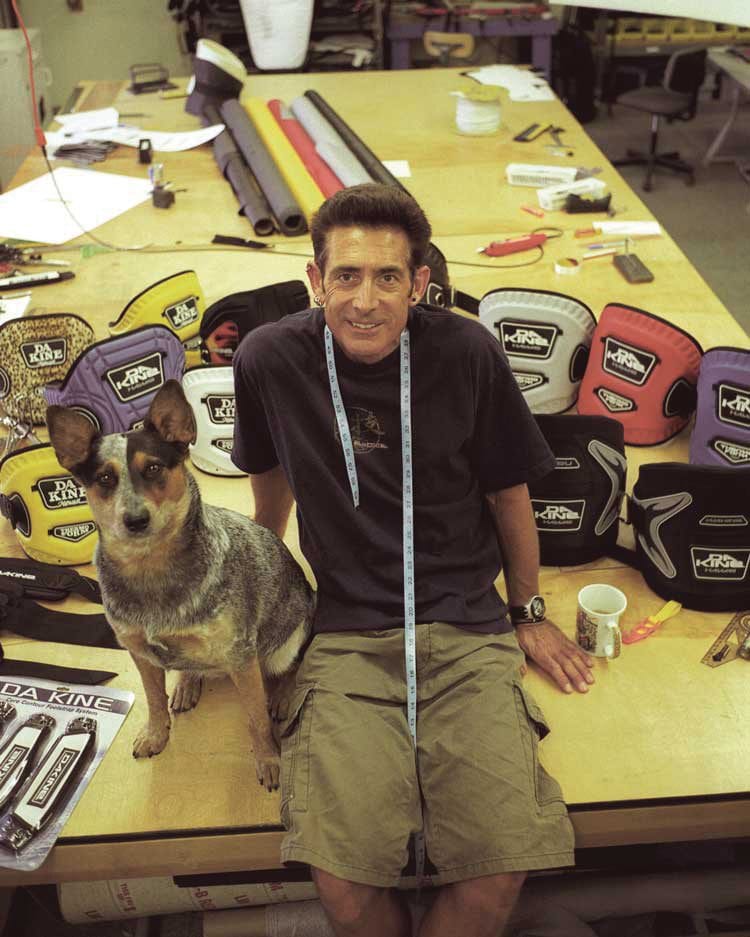When Frenchman Manu Bertin traveled to Maui in 1996 with a Wipika prototype, one of the only inflatable kites in existence at the time, it was natural evolution that Dakine would take notice. Starting almost twenty years earlier, the company had already achieved great success in leading the windsurfing accessory industry, and when Manu hit Maui, they recognized kiteboarding’s potential to follow.

Kevin Young surrounded by Dakine’s 2002 windsurf and kite harness designs. // Photo courtesy of Dakine
Kevin Young, Dakine’s previous product designer (early 1990’s until 2003) and the talented tinkerer behind many of the company’s product innovations including windsurfing’s first anatomically fitting waist harness, quickly got to work. In 2001, the company launched its first kiteboarding accessory line consisting of leashes, harness loops and kite-specific board bags. One year later, Dakine introduced the Pyro to market. The world’s first production kite waist harness integrated technology and design principles that the company had learned from windsurfing as well as specific innovations never before seen in kiteboarding. A profound invention, the Pyro still remains one of their most popular products today.
The first Pyro came with a sliding spreader bar, stretch panels at the side (meant to absorb the extreme pull from two-line kites), a hook knife (plastic at the time, see photo) and a back handle (used to hold people down in the two-line kite days) ”” all of which are now standard on most kite harnesses, with the exception of the stretch panels which Dakine found were unnecessary. The next major innovation in kite harnesses occurred in materials, with the introduction of thermoformed EVA foam covered with marine grade vinyl, which quickly became standard practice for many harnesses. Not long after, the Pyro was equipped with the first ever spreader bar pad to help protect rider’s ribs when there was upward pull on the kite.
Around 2008, the Pyro design moved to segmented inner and outer parts. Instead of using one piece inner and one piece outer, the Pyro used six panels, which allowed for shaping seams that offered an improved forming fit. The next year, Dakine added a PE inner structure with a pre-curve shape, providing the Pyro with even more contoured shape and support. The most recent update to the Pyro design is the Freedom shape spreader bar pad. The spreader bar pad is now narrow and round. This gives the rider the freedom to bend more at the waist and doesn’t push into your body, hitting pressure points.
Over the years, since the first Pyro hit retailers’ shelves, much has been learned about waist harness design. Today, harnesses focus on support, fit, comfort and safety with various spreader bars specific to riding styles. With a focus on userfunctionality and ergonomic design, the future is very bright for continued innovation.
This article was featured in Tkb’s 2016 spring issue. Want more like this? Subscribe here: https://www.thekiteboarder.com/product/magazine-subscription/


